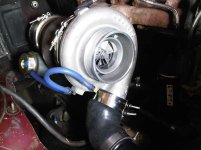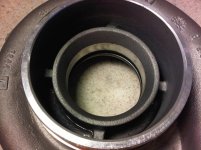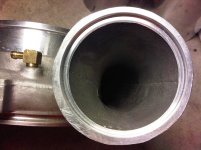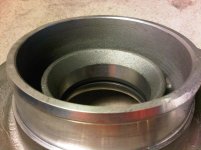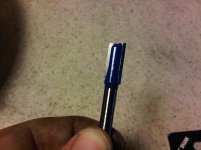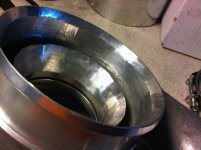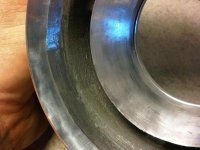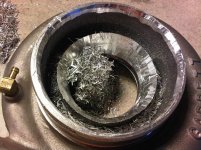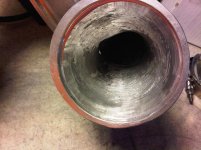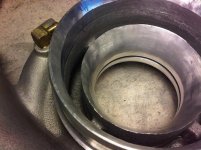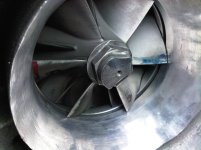The next upgrade is going to be a looser torque converter. I want to be able to spool-up at the line and get a real world horsepower comparison between HX35 at 55 lbs per minute to GT4294 at 88 lbs per minute with the same fueling setup. The next two track days are Wednesday Sept 8th and Friday Sept 10th so hopefully the mailman delivers early enough that I can get the converter installed before then. After collecting a few time slips for comparison, I'm going to turn up the wick with the 5x.018 injectors and play around with my recently acquired full cut delivery valves.
As far as bigger injectors helping spool-up, I'll have to test it to know for sure. My thinking right now is that the larger injectors will not help spool-up. The current setup has more than enough fuel to slow down spool-up if I lay into the accelerator pedal too hard in low or zero boost situations.
And just a little bit of feedback regarding transmission fluid. I drained the pan on the tranny of the tractor fluid mix and replaced it with regular cheap Walmart Dexron III ATF. When the Junker's tranny is completely empty, it holds 16 qts, just draining the pan took 9 quarts fill up. The previous mixture was 13 quarts Hydraulic Tractor Fluid + 3 quarts Type F ATF for color.
Don't worry about the math but basically the tranny is now running a mixture of 10.3 qts ATF + 5.7 quarts John Deere Hy-Gard Tractor Fluid. With this new fluid mixture, the torque converter stalls 50 rpm higher than the old mixture. So it looks like the most you can lower your stall with Hydraulic Tractor fluid is about 100 rpm if you run 100% tractor fluid.
I personally don't run the tractor fluid to lower the stall, I'm after the better heat durability, better lubrication for the large moving parts like planetaries, and most important higher friction to help my clutch packs have more bite.
For the average Joe looking to lower the stall speed a little, Hydraulic Tractor Fluid seems to be an option in warmer climates.

